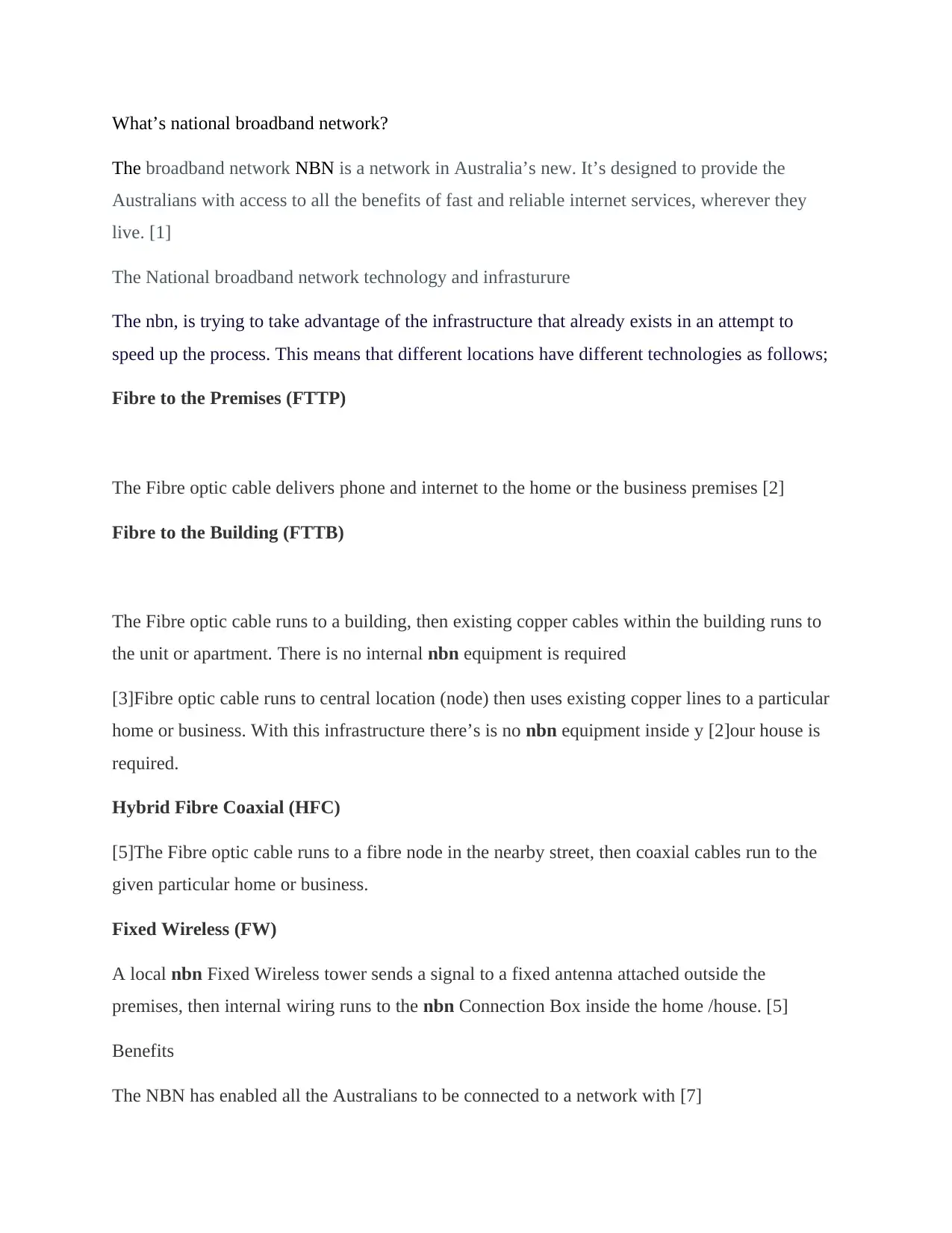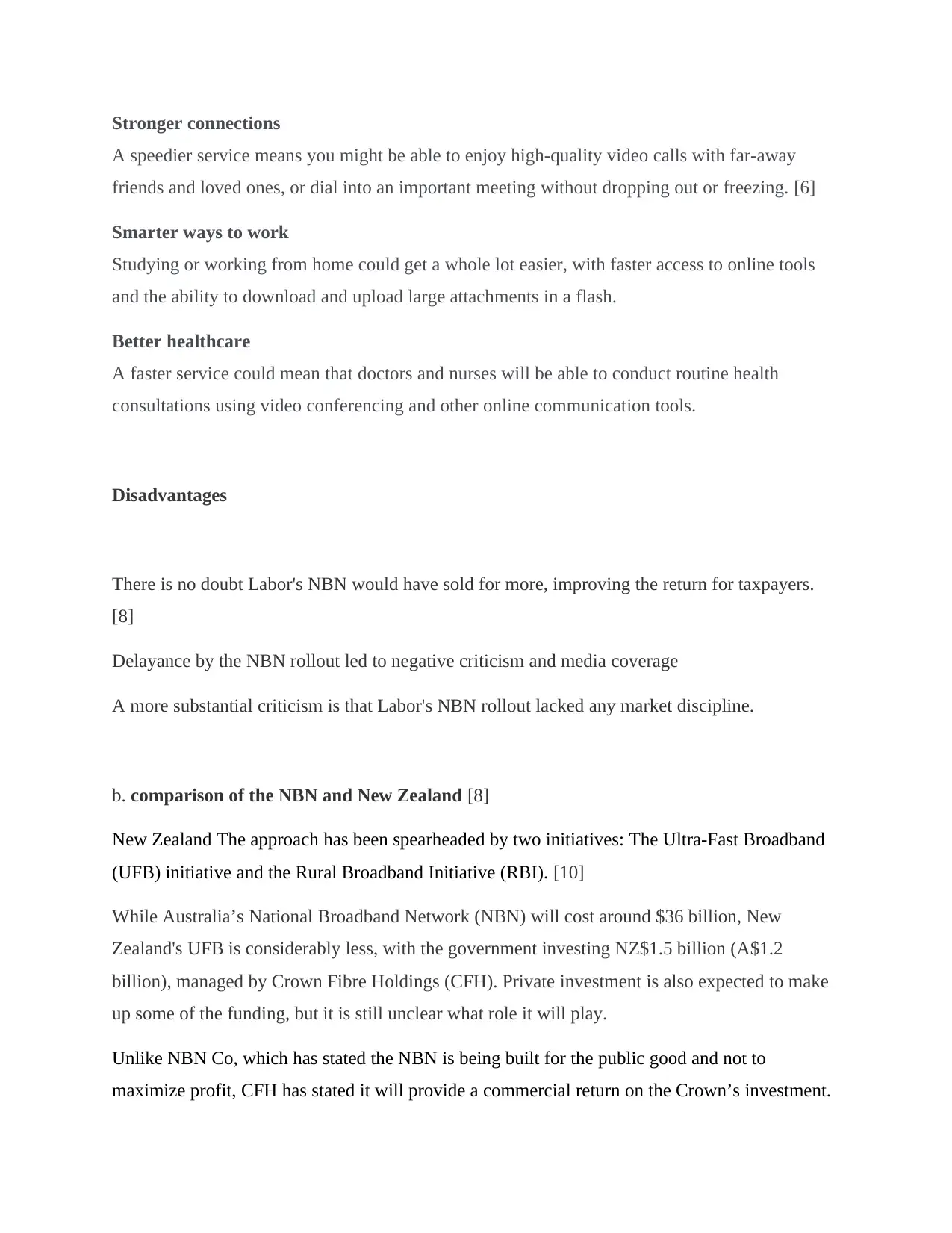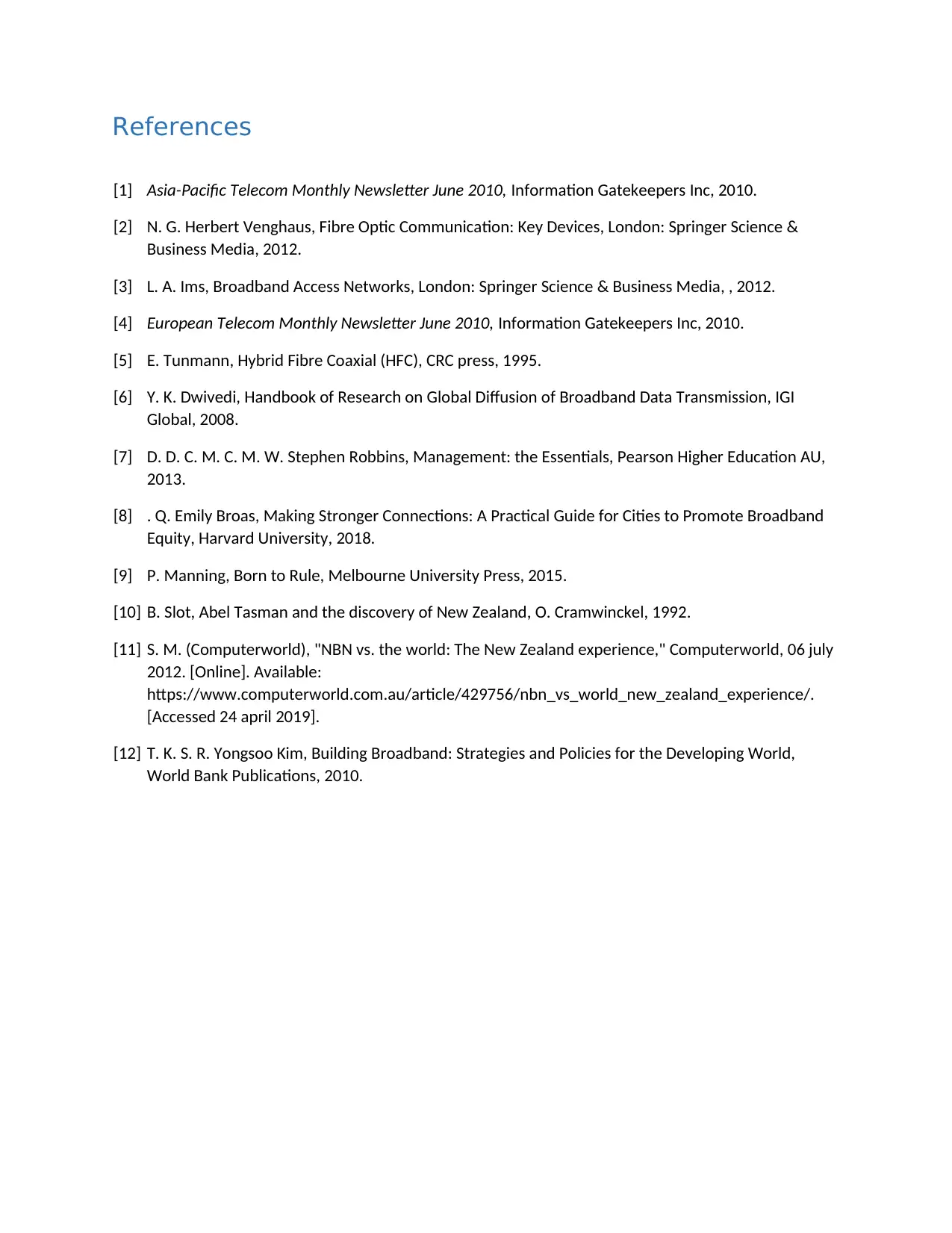Assignment 1: NBN Technology and Comparison Report - ME503
VerifiedAdded on 2023/01/23
|4
|899
|89
Report
AI Summary
This report provides a comprehensive overview of the National Broadband Network (NBN) in Australia. It details the various technologies and infrastructure used, including Fibre to the Premises (FTTP), Fibre to the Building (FTTB), Fibre to the Node (FTTN), Hybrid Fibre Coaxial (HFC), and Fixed Wireless (FW). The report highlights the benefits of NBN, such as stronger connections, faster service, and smarter ways to work and receive healthcare. It also addresses the disadvantages, including criticisms of the rollout and cost. Furthermore, the report compares the NBN to New Zealand's broadband initiatives, specifically the Ultra-Fast Broadband (UFB) and Rural Broadband Initiative (RBI), discussing their respective costs and approaches. The report concludes by referencing relevant sources to support the information presented.
1 out of 4








![[object Object]](/_next/static/media/star-bottom.7253800d.svg)